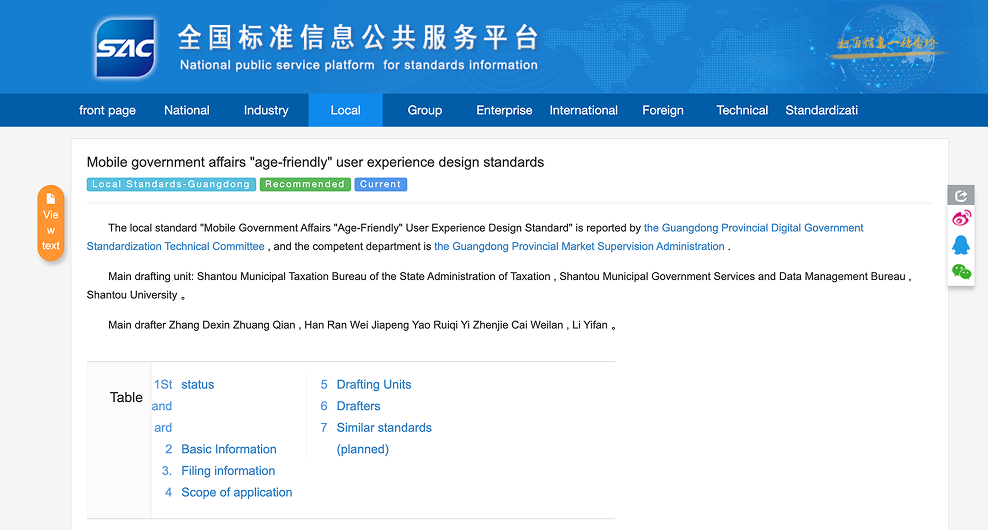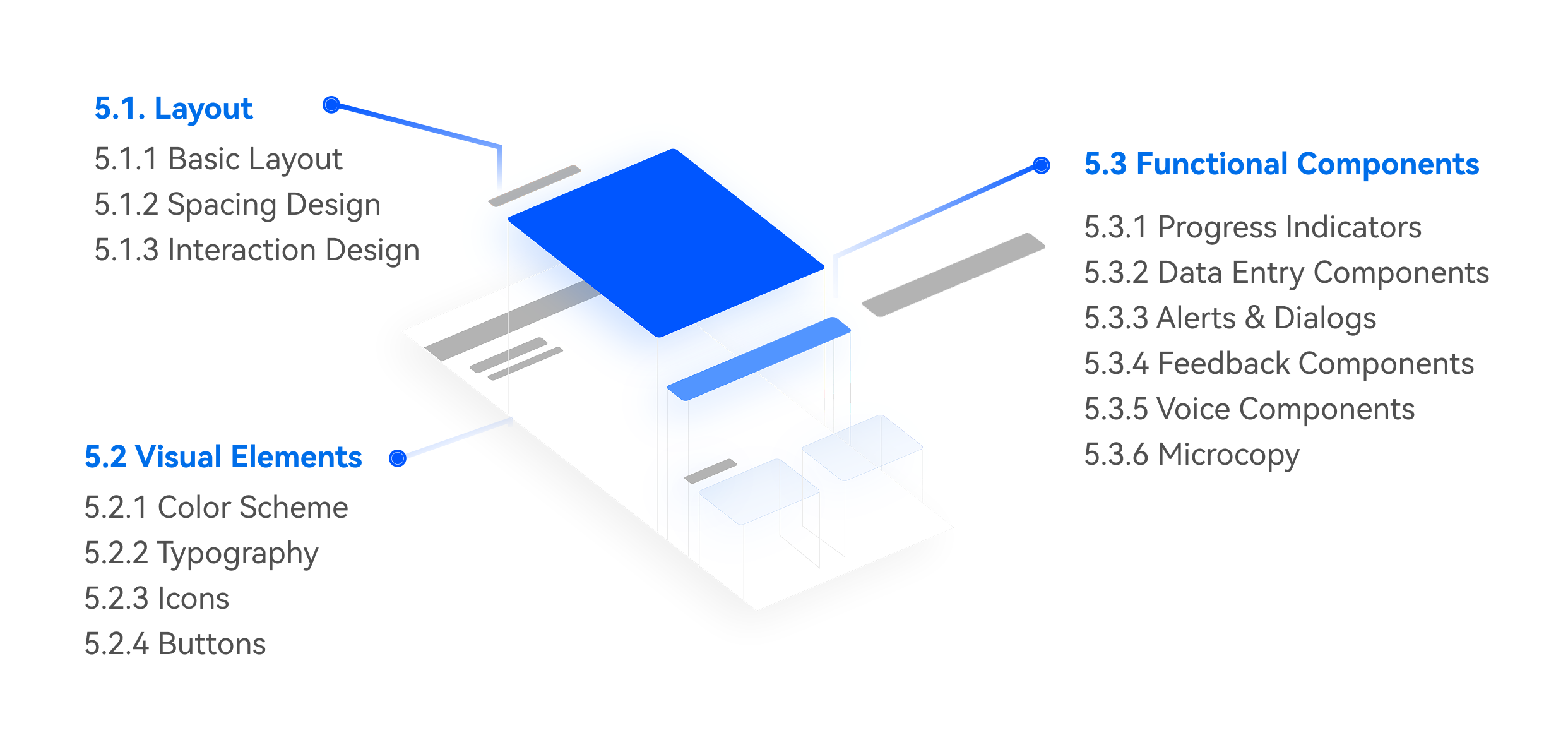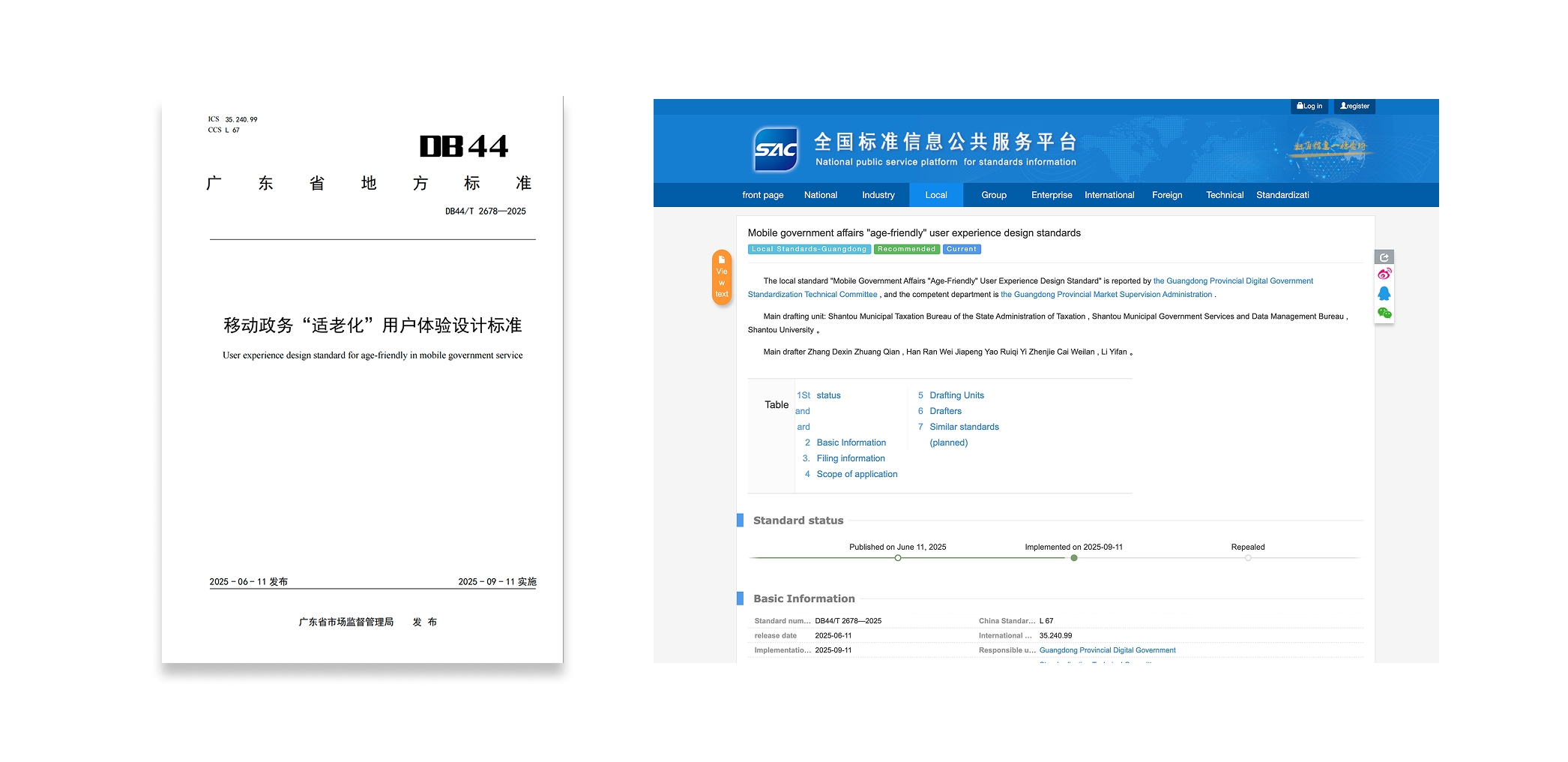Part I: Pilot Project — Age-Friendly Mini-Program
We began with a nationwide analysis of 36 major mobile government service platforms and collected over 12,000 records of real user interactions from older adults in authentic service contexts. The findings revealed that most existing platforms lacked consistent standards for age-friendly design. Interface structures and procedural logics varied widely, forcing older adults—who generally have lower digital adaptability—to relearn tasks on each platform. This not only created stress for users but also imposed high development costs for service providers.
To explore a bottom-up approach, we selected the social security service, one of the most frequently used and impactful services for older people, as the testing ground. Supported by the Guangdong Provincial Taxation Bureau, we conducted in-depth interviews, contextual observations, and service blueprinting in service halls. This helped us map the user journey from discovering the service to completing a task, identifying key issues such as confusing information hierarchies, low visibility of functional entry points, poor text readability, and redundant process steps.
Frontline staff guiding older users through the digital service at a government hall
The challenge lay in balancing three factors: complex administrative procedures, technological constraints, and user experience requirements. To achieve this, we invited government administrators, frontline staff, developers, older users, and designers to co-design the improvements. Based on their feedback, we streamlined processes and redesigned the interface to match new, simplified task flows. For example, the high-frequency service of “residents’ social security payment” was reduced from a multi-page, 10+ step process to two main pages with two key steps, partly enabled by automatic data pre-filling.
As a result, the average completion time dropped from about 7 minutes to around 1 minute. These changes were approved by administrators and technically supported by developers, allowing us to launch the pilot version within three months. By June 2025, the mini-program has supported nearly 500,000 older users in accessing their social security services more easily.
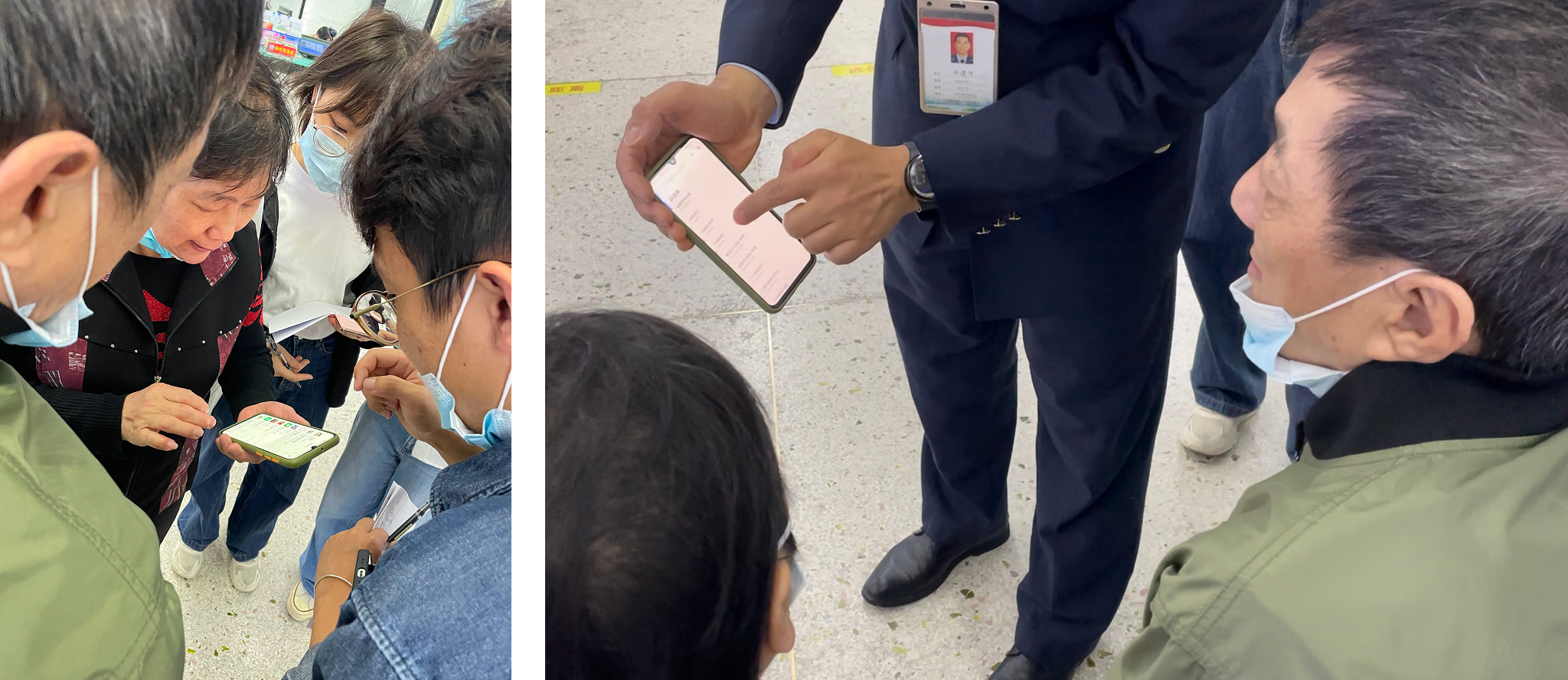
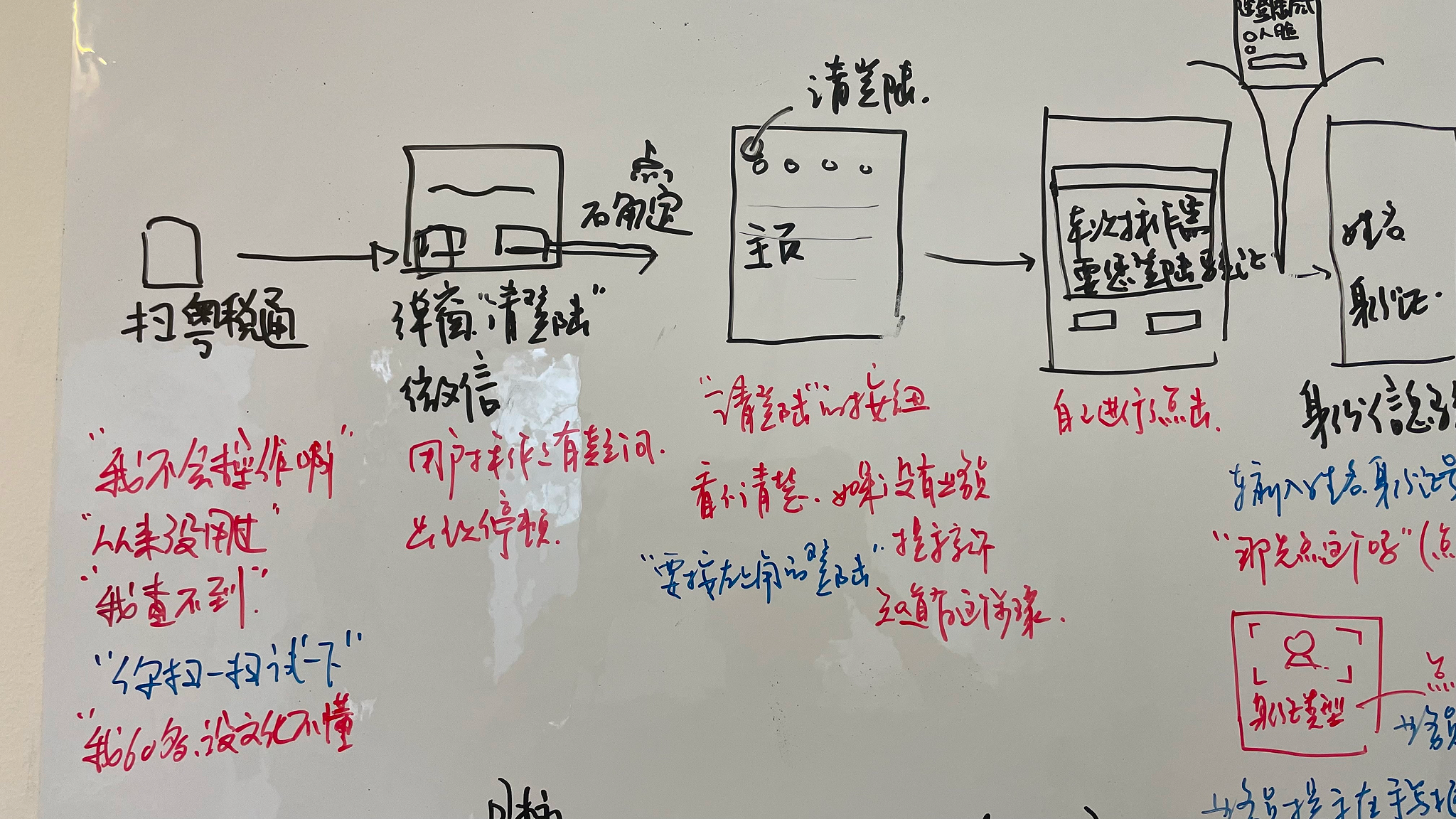


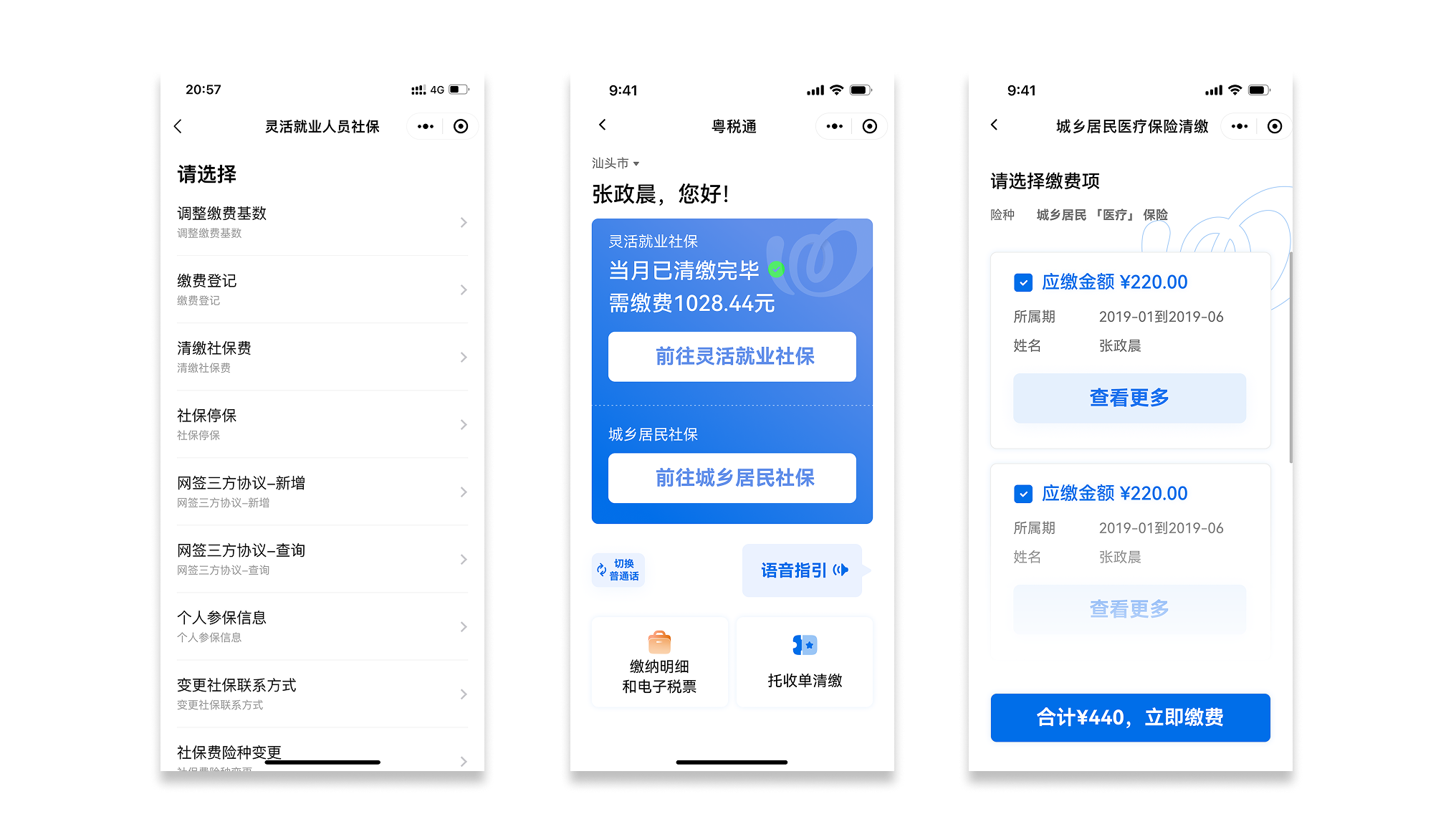
Comparison of optimized processes: redesign of 15 major workflows in the “Social Security” module
Interface redesign: original interface (far left) versus the age-friendly version, where tasks can now be completed with simple buttons instead of navigating multiple pages
Analysis of user challenges encountered during service use
